The domain of audio interfaces is fascinating, yet perplexing with its dramatic array of hardware and drivers. The complexity of an audio interface’s function, as it flawlessly translates analog signals into digital data, and vice versa, poses unique problems. Traversing through the intricate web of audio interface hardware, drivers, and their significant contribution to the audio processing chain, this text aims to empower enthusiasts and hobbyists. Not only will it unravel the mysteries surrounding common audio interface problems—like driver conflict, feedback issues, latency, and hardware failure—but it will also equip you with the needed tools to troubleshoot confidently and effectively.
Understanding Audio Interface Hardware and Drivers
The Symphony of Sound: Audio Interface Hardware and Drivers’ Crucial Role in Audio Processing
The sweet sound of a finely tuned guitar echoing under the stars. The pulsating rhythms of bass and drums shaking the grounds of a music festival. These blissful experiences, these soul-moving moments that music lovers so ardently chase, all hinge on an intricate ballet of technology and artistry; at the heart of which lay the unsung heroes – audio interface hardware and drivers.
Picture the grooves on an old vinyl; delicate yet monumental, techniques in capturing and replaying these sounds have been deep-rooted in our musical history. With the evolution of technology, the precursors of these grooves are modern-day audio interface hardware and drivers.
A single chord struck on a piano key resonates, transforms the air around it into rhythmic waves. This acoustic energy travels until it collides with a digital audio interface, marking the beginning of an extraordinary journey of transformation from an analog sound wave into digital data through a process termed as ‘analog-to-digital conversion’. This is where the peace treaty between technology and acoustics is signed.
Imagine the audio interface as the ambassador for acoustic sound waves: it’s here that they’re translated into the universal language of digital, granting them access into the wider world beyond the live stage or the recording booth. From the lively twang of a country guitar to the haunting melodies of an opera singer, each audio nuance is faithfully captured and codified, ready to be transmitted to the ear of the listener regardless of where they may be.
Then enters stage-left, the indispensable drivers. These software comrades serve as liaisons, facilitating the conversation between your computer and the audio interface hardware. Ensuring the most delicate of sound details are not lost in translation, they carry out this ever-important task shot through with the romance of a moonlit serenade.
Choosing the right audio interface hardware and drivers has crucial implications for sound quality and latency. Optimal transmission speed and detailed sound quality avoid any dissonance and ensure an immersive listening experience. The right interface and driver duo is like a musical conductor, communicating with everyone within the spectacular orchestra that is the audio processing chain.
Remember, music in its purest form is a native language to human emotions, vibrations that tell tales of joy, of sorrow, of love lost, and love found. These experiences get magnified when the reproduction of sound is seamless and accurate. Audio processing, the subtle maestro behind the scenes, builds the bridge between the artist’s emotions and the listener’s perception. Therefore, the significance of an audio interface and its corresponding drivers in this grand symphony is simply, melodically, undeniable.
In the pursuit of ultimate musical ecstasy, whether for sonic creation or for soul-satisfying appreciation, cherishing the role of audio interface hardware and drivers is crucial. They are more than simple functional necessities; they are the conductors of the symphony, plugging every music enthusiast into the world’s largest ensemble piece: the universal rhythm of sound itself. Allow these unsung heroes their spotlight and see your audio experiences transform. Music, after all, is the language of the soul, and every soul deserves to be heard in all their nuanced beauty.
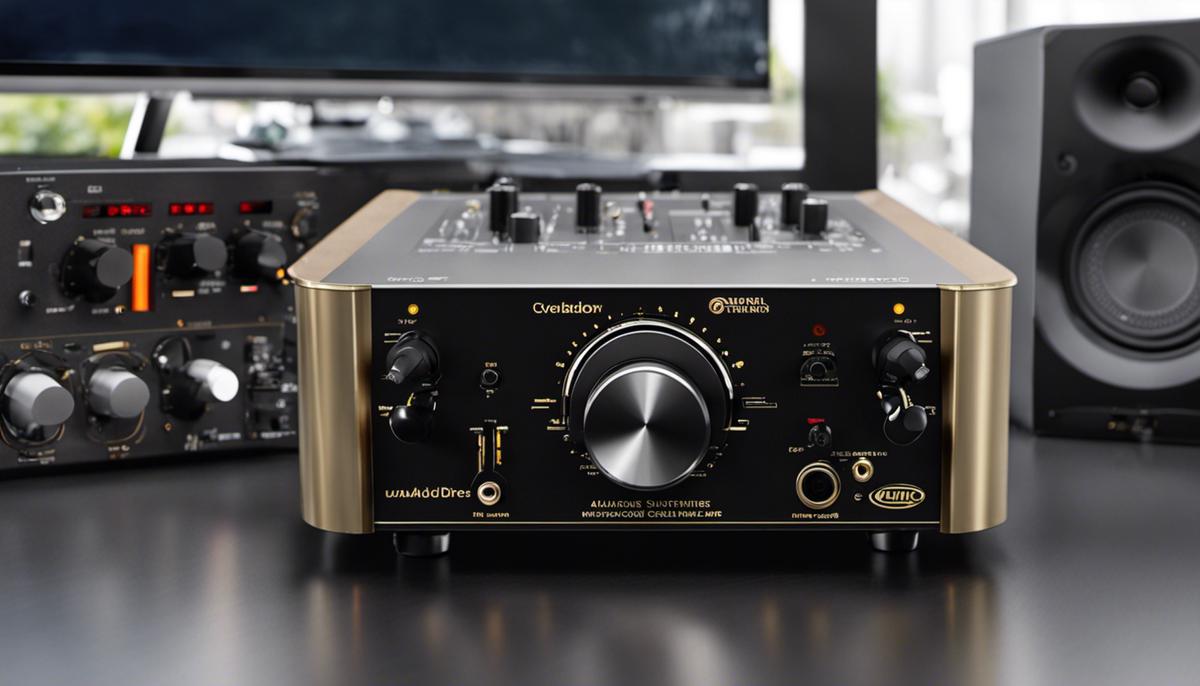
Identifying Common Audio Interface Problems
As music enthusiasts, it’s integral to comprehend the most common issues encountered when dealing with audio interfaces. These problems, if not nipped in the bud, can be detrimental to the purity of musical expression, the aesthetic of sound, or the transportive element in music experiences. Let’s unravel then, what could possibly go wrong with audio interfaces?
- Poor Sound Quality: The most evident trouble that could prevail with audio interfaces is poor sound quality. It’s the audible dissonance that snatches away the listener’s joy. This could manifest in various ways – be it unnecessary noise, unwanted static, or any distortion that deviates from the originally intended sound. For a music fanatic, this can be akin to paint spilling on a masterpiece – a disheartening experience indeed.
- Latency Issues: Imagine empathically tuning into the rhythm and rhyme of a soulful melody, only to be disrupted by uneven delays or lags in the sound. These are latency issues, a chief concern with audio interfaces, and they can distort the sense of musical continuity. In the worst-case scenario, it could pull the listeners out of their immersive engagement with the music.
- Driver Compatibility: Here’s a hurdle even the technically astute sometimes stumble over! An audio interface is as efficient as the driver it’s paired with. Inaccurate pairing equivalently translates to a barrier in fluent communication between the software and hardware. This miscommunication can potentially lead to frequent system crashes or decreased performance, ultimately tainting the sonic experience.
- Limited Connectivity: An audio interface with limited connectivity options could potentially restrict an artist’s exploration of multiple instruments, hence, inhibiting the creation of multi-layered arrangements. This could mean compromising on innovative experimentation and creative liberties, something truly challenging for a music devotee.
- Power and Hardware Issues: Power failures can lead to sudden cutoffs, failing to adequately supply the required load to all connected equipment. Weak or outdated hardware reduces the overall efficiency and durability of the system, leading to frequent breakdowns and chances of lost data. This might subtly rupture the dancing dialogue between the artist and the listener.
- Impaired Sound Reproduction: Accuracy in sound reproduction is as essential as the heart beating in rhythm within us. Any glitches here can lead to discrepancies in the conversion of analog sound waves into digital data, affecting the true representation of the artist’s intent. A distorted line on the canvas may ruin the charm of the portrait, similarly, an inaccurate sound reproduction can mar the beauty of the musical craft.
The sheer splendor of a musical voyage lies in its seamless unfolding and those enchanted by its charm are well aware of how any misadventure with their audio interface can break that spell. Being aware of these pitfalls, and understanding their potential impact on the musical discourse, could be the first step in ensuring that everyone remains harmoniously tuned into the universal language of music.
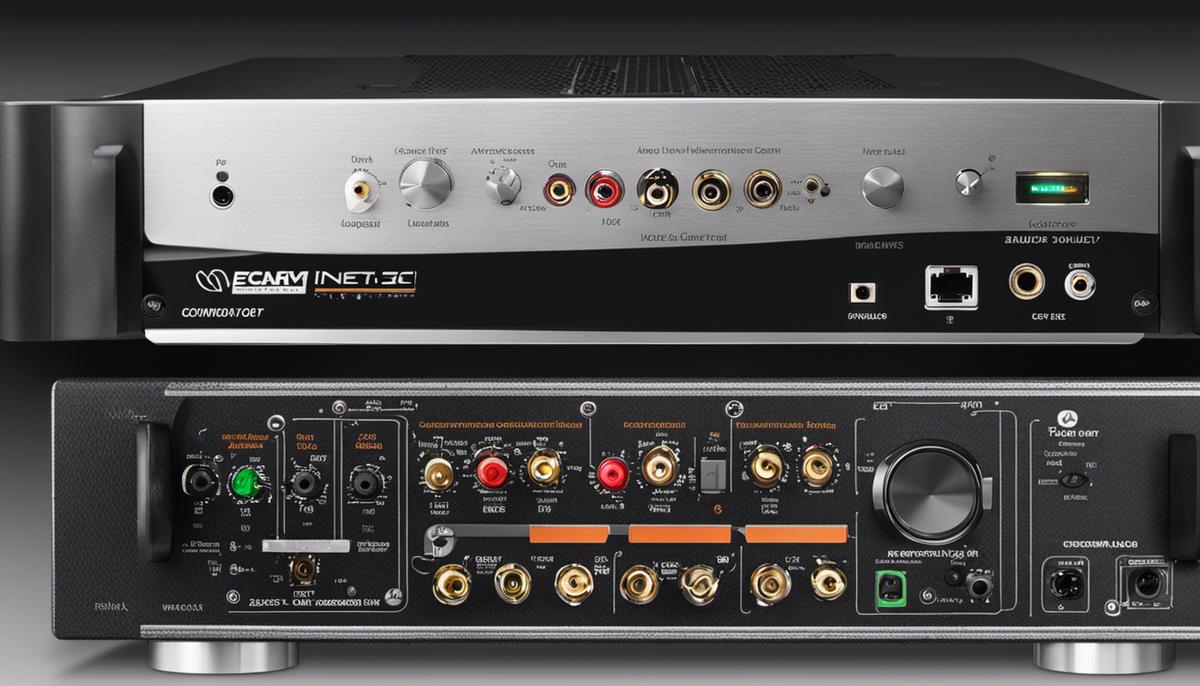
Troubleshooting and Solving Audio Interface Issues
Now, after laying down the incredible gravity of audio interface hardware and drivers in molding your musical quest, let’s delve into the crux of troubleshooting various audio interface glitches. Like a symphony needing every instrument to perform flawlessly, your interaction with music requires the smooth functioning of all components. When a discordant note rears its unsightly head, here are some steps that could potentially fine-tune the experience:
Separated into distinct segments, each aiming to target specific issues, the guide is directed at enabling your expeditions into the unfathomable depths of sound unimpeded.
Issue 1: Poor Sound Quality
The first issue one might encounter is that of poor sound quality. It could emanate from a noisy signal, resulting in a muddled audio output. A step you can readily take is to check the signal strength. Ensure you’re adhering to the optimal input level range, thus avoiding both too weak a signal and the dangers of clipping. Further, verify the sample rate and bit depth settings – align them with your recording needs. Finally, make sure you’re using high-quality cables to avoid unwanted noise.
Issue 2: Latency Issues
Next up is the notorious culprit, latency. As the time delay between inputting a signal and hearing the output, latency can significantly compromise your music experience. It’s advisable to lower your buffer size, which reduces data processing time and hence minimizes latency. Remember though, ultra-low buffer sizes might strain the CPU excessively, so find the right balance.
Issue 3: Driver Compatibility
Another issue is the potential incompatibility between your computer and the audio interface drivers. Keep your drivers updated to the latest version to ensure optimum performance. If the problem persists, try reinstalling the drivers after a complete uninstallation. You may also need to consider whether the chosen drivers are compatible with your computer’s operating system.
Issue 4: Limited Connectivity
Limited connectivity could mean broken lines of communication between your audio interface and other devices. Double-check all your connections. Ensure the cables are rightly plugged, grounded and firmly seated at all ends. If an issue persists, it may be worth exploring advanced settings in your audio interface controls or working system.
Issue 5: Power and Hardware Issues
Power and hardware issues can be frustrating but usually have simple solutions. Ensure your device is plugged into a functioning power source. If battery-powered, check the battery levels. Look out for any physical damage to the hardware.
Issue 6: Impaired Sound Reproduction
Issues with sound reproduction can significantly impede your music experience. Check your system output settings and ensure your software is not clashing with the interface. Software updates or reinstallations might be required in some cases.
Steering these hurdles, you can then navigate uninterrupted through the musical cosmos. Troubleshooting issues with your audio interface is just part of the journey, a mere pitstop before the real concert begins. Remember, the magic of music is ever forgiving and infinitely rewarding. So strap in, troubleshoot if you must, but never cease to immerse yourself in the universal language of melody.

True mastery in any field is not merely about accumulating knowledge—it’s about acquiring skills to navigate through complex situations independently. This journey to understand audio interfaces, identify common issues, and learn troubleshooting strategies is a solid step in that direction. Just as a well-tuned instrument produces the most harmonious melodies, a well-understood audio interface can ensure seamless audio experiences. Apart from solving issues, preventive measures such as regular driver updates, buffer size adjustments, and connection checks play key roles in maintaining optimal performance. Remember, the world of audio is rich and beautiful; with the right tools and undeterred curiosity, there’s no limit to what you can explore and create.
If you are looking for recording studios in Chicago, you’re in the right place! Hit us up with any questions you might have! 312-372-4460
Imagine being swept away by the ethereal whispers of a symphony or being jolted by the thunderous boom of a drum in a rock concert – this is the magic of dynamic range in audio. Not just mere volume, dynamic range in audio is an elegant dance of louds and softs, silence and cacophony, that brings music to life. However, modern audio technology, in its relentless pursuit of loudness and commitment to fit within medium restrictions, tends to destroy this equanimity. Over-Compression, an often-used method to achieve this, ends up stifling the dynamic range, morphing a musical masterpiece into a repetitive drone. This essay will journey through the realm of dynamic range, exploring its importance, laying bare the consequences of Over-Compression, and finally discussing techniques that could reverse the effects of this audacious practice.
Understanding Dynamic Range in Audio
Unearthing the Subtlety: Dynamic Range in Music Reproduction
Silently beneath the pulsating beat of a song, within its intricate fabric, breathes the unsung hero of music reproduction – the dynamic range. A token of sonic subtlety, it’s the quiet whisper magnifying the amplitude of emotions expressed through musical notes. Its role is to carefully suspend auditory magic in the air, while rendering your listening experience utterly captivating and strikingly vibrant.
Imagine strolling through a vibrant cityscape. There are towering buildings etched against the sky, sprawling parks breathing life into the concrete jungle, and sudden alleyway dips into colorful urban chaos. The whole spectacle is a city’s dynamic range – the amplitude differences between the quietest and loudest sounds of its audioscape.
Just like the cityscape, music too is a lively mix of sonic highs and lows, ebbs and flows. It’s the quiet plucking of the guitar string puncturing the silence one moment and an all-out symphonic hurricane roaring the next. The dynamic range oscillates from the whispers to the thunder of musical notes, deftly weaving the incredible journey of a melody that resonates with the depths of the soul.
In music reproduction, the dynamic range is crucial. It brings alive the spirit of the music, exerting a phenomenal control over the emotional palette. Have you ever wondered how a particular track can make your heart race, your eyes well up, and your goosebumps flare up in sequence? Behind all these emotional currents is the gentle manipulation of dynamic range.
Moreover, the dynamic range can make or break the listener’s experience. For any authentic music aficionado, the aspiration is to hear the track as the artist intended. If the dynamic range is too narrow, it strips the music of its vital contrasts and compresses it into a monotonous stream of sound. On the other hand, an excessively wide dynamic range can immerse listeners in cacophonous chaos, disrupting the sought-after harmonious balance.
However, a perfectly balanced dynamic range unlocks the transcendental potential of music. It can transport the listener into the heart of a bustling orchestra or an intimate live music show, compelling every note to breathe life into the listener’s auditory universe. The allure of vinyl, a seemingly antique form of music reproduction, lies in its ability to deliver a high dynamic range, a richer and warmer sound, much like the organic feel of a live performance.
This enveloping charm of the dynamic range is indeed the touchstone of any musical composition and its reproduction. Whether it’s an infectious rhythm electrifying a moonlit festival, a poignant ballad spilled from a pair of headphones, or a jazz tune be-bopping through the alleyways, the dynamic range amplifies the harmonious paradoxes within the melody.
And so, as you unravel the mysteries of your next mesmerizing melody, marvel at the towering crescendos and gentle decrescendos. Plunge into the sparkling highs and rumbling lows. These are the intricate threads of the dynamic range, deftly woven into the tapestry of soundwaves soaring through the air. After all, the dynamic range is the heart that pumps vitality into the venous system of music reproduction.

The Consequences of Over-Compression
The Strangling Hold of Over-Compression: A Silent Distortion of Music
Music, colored with its resonating waves of sonic timbre, breathes life into the monotonous rhythms of our everyday existence. It transcends general conversations, breaking barriers, pulling strings of hearts across the globe. But, the beauty of this universal language can be inadvertently shadowed by over-compression, a common misstep in the journey from creation to reproduction.
Over-compression, or the process of leveling out sonic highs and lows through the limitation of audio peaks, is a beast dressed seductively in the promise of increased loudness. It may provide an initial punch, an electrifying jolt of energy, yet this glamor is fleeting, rapidly dissolving into an exhausting monotony that breeds listener fatigue.
There’s a palpable magical essence that revolves around the unpredictable rise and fall of musical beats. But, over-compression bypasses this natural charm, soldiering through towards an intensity that unnaturally stays put throughout. A painted tableau of dynamic range parted by diverse peaks and valleys is flattened, twisted into a featureless plane.
More detrimental is over-compression’s unfortunate theft of the artist’s original canvas. The subtle brushstrokes of quieter elements, the seamless foundation of softer layers, are all lost within the tight grip of overemphasis. It robs the musical piece of its artful crescendos and decrescendos, swallowing the nuances and rendering the piece devoid of its original uniqueness.
It’s not unlike a painting being squeezed into grayscale—though distinctive shapes and figures might remain, the vibrance and depth of colors are regrettably sacrificed. Music, after all, is a three-dimensional landscape, and the application of over-compression shoves it into a flat, two-dimensional box.
The prevalent belief among producers that louder music equals better music is unwittingly amplifying the over-compression crisis. Steeped in a race to “loudness”, they may unknowingly fatigue the listener, risking the longevity of their relationship with the audience.
In the thriving digital era of music reproduction, it is high time we grasp the subtleness of tones, the concert of overtones, the intricacy of harmonics, and the depth of dynamic range. Over-compression, though a handy tool in moderation, should not overstep its bounds within the greater musical universe—a universe teeming with auditory echoes of diverse expressions and emotions, all shouting to be heard in their original, undiluted glory.
Let’s not forget, the play of light and shade in a painting, the rise and fall of poetic verses, the dynamic range in music is an echo of life’s joys and sorrows—one that’s not meant to be drowned in the relentless tide of over-compression.

Techniques to Combat Over-Compression
Venturing Beyond the Loudness: Countering Over-Compression in The Audio Industry
As the illustrious scale of musical bounty is snuffed out, one cannot help but mourn the slow erosion marking the landscape of audio creation—a grim scenario chiefly engineered by the act of over-compression. The sinewy intricacies woven by artists often get bleached out, trampled under the tangible might of unmitigated loudness, an equivalent to converting a luminously hued masterpiece into monotonous grayscale.
To appreciate what’s at stake, it’s vital to understand what this ubiquitous term, over-compression, actually encapsulates. In the simplest of terminologies, it can be envisaged as a sonic manipulation protocol applied during the mastering phase that unfortunately clips the peaks, in turn, ironing out the gaps between the loudest and the softest notes. The outcome, though seemingly punchier, is essentially the degradation of audio quality. This process squanders lightly kissed intimations that artists deliberately bake into their oeuvre, muting the language of their unparalleled creativity.
Over-compression crudely confiscates the grandeur of dynamic range. Akin to a multi-dimensional painting losing its vibrancy, sprawling sonatas and melodic whispers gradually transform into a one-dimensional wall of sound when over-compression is applied unabashedly. The listeners are robbed of sonic waves’ rises and falls, subsequently quashing the emotional resonance and the intimate conversations that music intends to foster.
Trapped in an audacious belief system of “louder is better,” this rampant high-volume consumption trend feeds into, and is perpetuated by, over-compression. It aligns with the audacious belief system that louder music holds a higher perceived value— a persuasion that turns a blind eye to the gradual erosion of melody’s soul. Such an incorrect notion shadows a deeper understanding of the music’s nuanced narrative and its sprawling panorama, whispering complexities through its peaks and valleys.
We must then, as lovers and connoisseurs of this universal language, take a step back. Return to the roots where musical textures were not camouflaged beneath the cloak of excessive loudness. It is time we celebrated the subtleties of softness, reveled in the rhythmic waves of dynamic loudness, and embraced the variations that reintroduce the listener to an artist’s passion— a sonic unity inherently flavored by the spectrum of dynamics.
To hinder over-compression’s damaging tides, we must champion a triumphant return to the natural dynamics in music. An ambition that calls upon the industry professionals, the audio engineers, and the music listeners to collectively reset their acceptance for sonic integrity. A return to cherishing the ebb and flow of rhythmic waves, fostering a wholesome union that echoes the original intent of the artist.
Echoing the united voices calling for this sonic restoration, let’s craft an industry where the listener can truly capture the artist’s emotive expression. A vibrant, dynamic soundscape that urges us to listen closer, where the delicate finesse of sound can be honored—a world free of over-compression’s smothering grasp.

Music, in its truest form, is a rollercoaster ride of silence and sound, the profundity of a whisper, the elation of a crescendo, all coming together to provide an immersive auditory experience. However, the pervasive issue of Over-Compression, often seen as a necessary evil in pursuit of loudness or medium-adherence, poisons this purity. It is up to us, the listeners, the creators, the technicians, to stand up against this insidious practice. By understanding, appreciating, and preserving dynamic range in audio, we can continue to experience art as it was meant to be. The knowledge and practices shared in this essay direct us towards that potential reality. Arm yourself with these tools, be wary of Over-Compression, and continue to enjoy music in its most authentic form – dynamic, emotive, and unique.
Mastering is an intricate dance, entailing a deep understanding of the science of sound and a keen, discerning ear. Failures in the mastering process are as painful as hitting a gnarly wave when you least expect it. This essay, designed for audiophiles and hobbyists, explores various essential aspects of mastering, diving deep into the optimum listening environment, balance in levels, equalizing techniques, the art of sequencing, and the pivotal role of vigilant monitoring. Consider it your guide to avoid wipeouts and ride the wave of mastering to a perfect sonic sunset.
The Importance of Good Listening Environment
Slash the Waves, Not the Vibes: Power of the Room in Mastering Tracks
Whoa, dudes and dudettes! If you’ve been carving up the studio, laying down tracks and dialing in sounds, then listen in, because this gnarly conversation about the importance of the vibe in your listening and mastering space is gonna blow your mind like a freak wave.
First up, let’s lay some tubular truth on you – the vibe of a room is absolutely critical when you’re listening and mastering your track. Yep, you heard right. You wouldn’t catch a wave on a flat ocean, and your dope tracks need the right vibe to get the sound just right. Vibes are like the invisible board we ride on the sound wave.
Think of the room as part of your toolkit. Dude! When you were tripping on how that funky synth track didn’t sound as cool once out of the studio, it was probably the vibe of the room messing with you. The acoustics, temperature, and even the color of the room can compose a symphony of influences on the soundscape, turning your epic track tubular or torpedoing it straight to the bottom.
Who can blame you for not musing over drywall and floor tiles when there’s that gnarly mixing console in front of you and fresh ideas cooking in your noggin? But not dwelling on these factors can lead to an aural wipeout. Control over acoustic reflections, isolation, and room modes can be the difference between riding the sonic pipeline or wiping out on a rogue wave of sound.
Get your noggin around this – even the dimensions of the room, like its size, shape, and materials used, can change your sound wave’s fate. Quite like how a tide changes the wave’s shape, these minute details can seriously tweak your sound. The long-winded story: the vibe of the room can make that bass sound crisper than a dawn patrol on the swells, or as muddy as a gnarly reef.
Mastering in a room that reverberates like an echo chamber or eats up sound faster than you gnaw through post-surf grub? Absolute bummer, dudes! The room vibes rattle around, affecting your perception of the sound. So if the room vibe isn’t spot on, you’re not hearing the true sound. And for a serious tune chaser, that’s like trying to ride the wave in knee-deep water – just not rad at all!
So, folks, before you jump headfirst into that sick beat, remember to check out the vibe of the room you’re working in, because a gnarly room can help your track ride the sonic wave to perfection, or it can totally bail, marring the sound experience.
Keep it gnarly, keep it real, keep it vibing. Tribe, see you on the flip side of the next wave! But for now, get out of the studio, hit the surf and stoke that creative wave. It’s all part of the vibe magic, dudes!
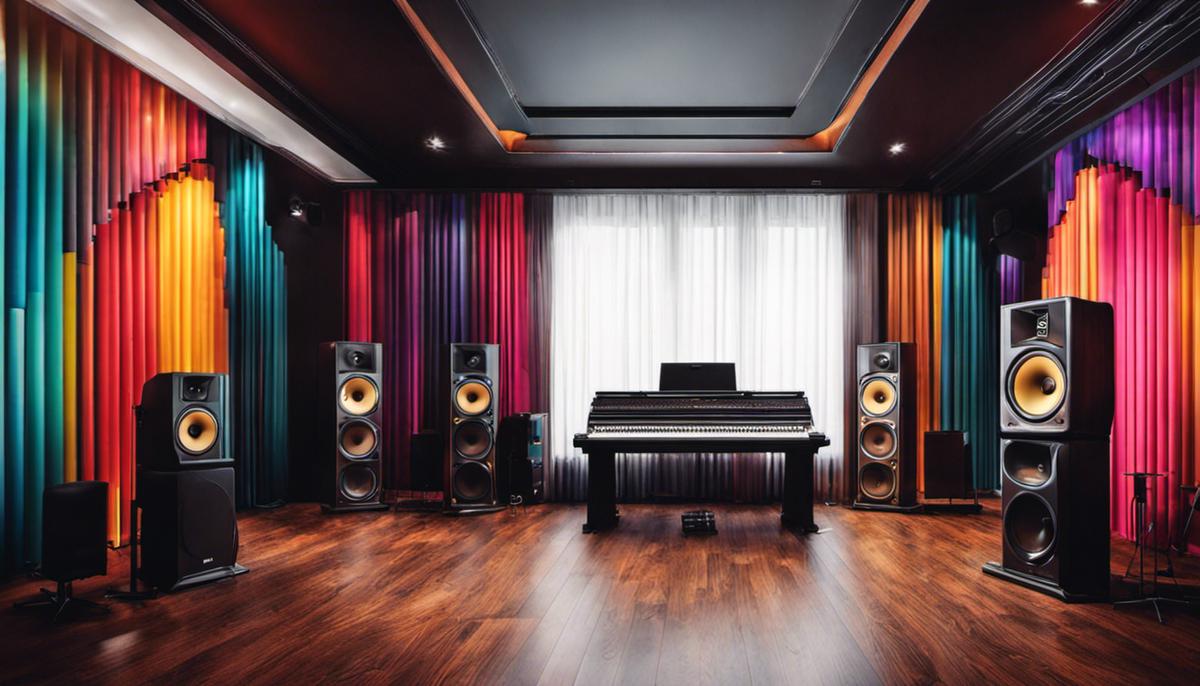
Balancing The Levels
Keep Your Mix Shreddin’, Dude: Mastering the Art of Level Balancing
Hold your sound waves, dudes and dudettes! Before Usain Bolt-ing into the gnarly world of mix flaming and finessing, pause a sec and let’s rap about this one burning question: What’s the whole mystic saga with leveling our mix, compadre? How do we keep the grooves smooth and the vibes balanced? No worries, we gotchu! Just stick around, and you’ll be soaring on that sound balance grind in no time.
First up, let’s check out this dynamo called dynamic range- Nuh-uh, not about bicep curls, bro! It’s this sick spectrum of difference between the quietest and loudest parts of your track. Too narrow a range, and you got your listeners snoozing; too wide, and boom- you just sent them to the moon. So, tread on that dial with the grace of a surfer catching an early morning swell. The highs and lows gotta ebb and flow like a perfect wave, you feel me?
Then, onto your tracks. Try to visualize them as your bro-squad. Sure, they each got their unique vibes and strengths, but they need to chill and bond together to form that perfect gnarly sound tribe. So, each track should have its space- in frequency and in the stereo field. Don’t go cramping them or let any one of them hog the limelight. Spacing, dudes, it’s all about spacing!
Now, how about dem kicks and bass? Let’s not forget we’re cruisin’ in the rad world of sound where deep resonating bass rides the wave. Try carving out the low frequencies in your non-bass tracks to let the bass cut through. Bit like giving the giant wave its very own surfing alley, ya dig?
Jumping ahead, picture leveling as a sweet ride on your longboard. You gotta keep your balance right, or else…splash, you’re fish food. Use your Volume Fader and Trim tool like the most delicate sandpaper on a fresh new surfboard- let it glide smoothly to dial in levels, starting from the loudest parts. Just remember, you’re aiming for balance, not an equilibrium. Let your mix soar and dip where it pleases- you just have control of the reins, amigo!
Shout out to automation now – easy does it, bro! Automation is the secret, magical key that can help keep that surf ride smooth – it can gracefully nudge those abrupt volume changes and rough spots into the sweetest cascades.
Finally, here’s the major buzz- Test your mix on different sound systems, just like how any rad surfer would test their board on different waves. Your car, speakers, headphones, laptop – variety is the spice here, compadre!
So, there you have it, sound soldiers – the gnarly gist of leveling and maintaining the balance in your mix. Dip into these waters and you’d be doing sonic somersaults on your surfboard in no time! Remember – in the wild, wild west world of sound, it’s all about balancing those binaural waves. Stay stoked, and keep those vibes cruisin’!
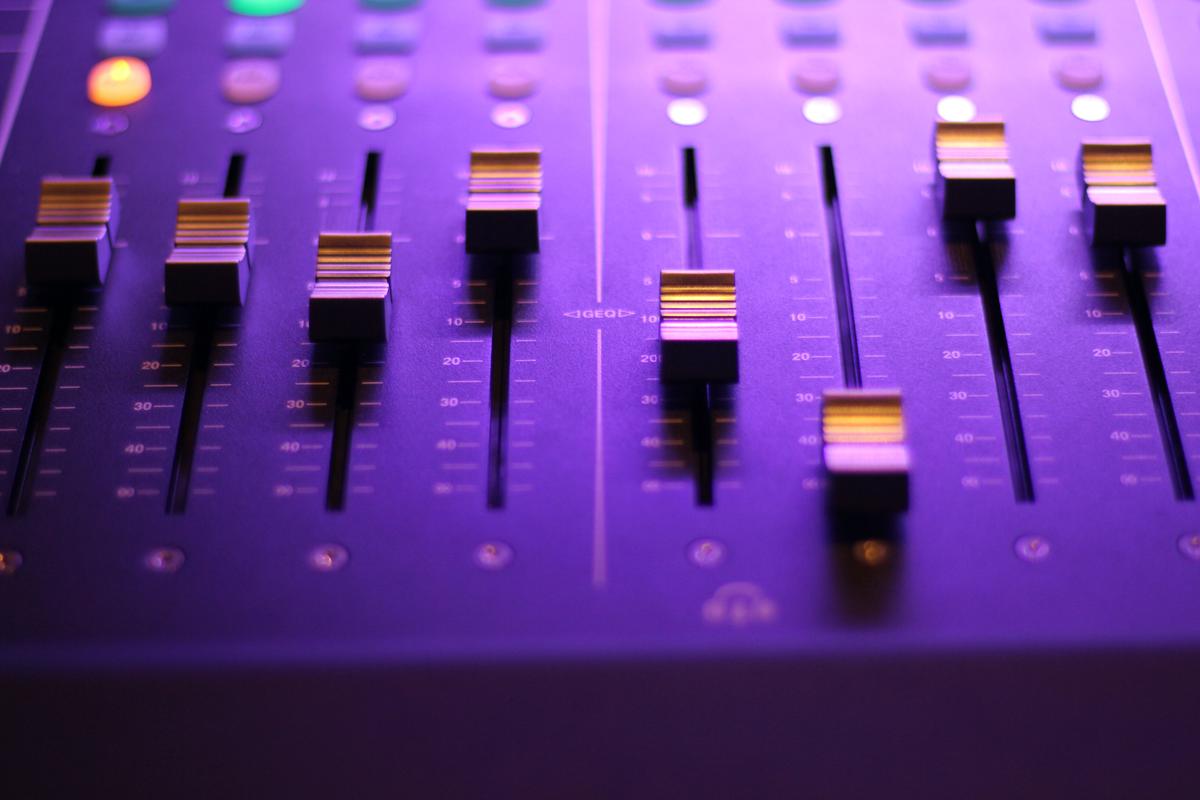
Photo by denisseleon on Unsplash
Equalizing Techniques
Equalizing Techniques: The Unsung Hero in Mastering Dude!
Surfer’s up brah! Just like that perfect wave we’re always chasing, mastering is all about finding the sweet spot, that balance where everything just vibes. If the wave is the sound and the surfboard is our studio, then equalizing techniques are totally the board wax. It’s the unsung hero, keeping everything gnarly, slick, and sliding right where it needs to be.
No doubt, broseidon, dynamic range is like our surfing playground. Limited dynamic range is like a flat sea, no thrill there, but going all limitless can end up like a stormy sea, way too hectic to surf! So, we gotta find that balance where each sound can ride at its peak without crashing into another. That’s where mastering steps in, dude, carefully controlling each sound’s amplitude, allowing them to flow like rad waves.
Dude, balancing tracks in the frequency and stereo field is just like balancing on that swaying surfboard. Just as we wax and position our feet on our board, we gotta position our sound sources in stereo field, creating an even, wider, and immersive soundscape for our listeners. It’s like summoning all good vibes from every direction.
Sometimes, there are gnarly mammoth waves aka low frequencies from kicks and bass. We’re stoked to ride them, but too many of these huge waves and we’re talking wipeout, drowned in all that low-end mud. Solution? Just carve out them waves, mate! Use HPF or a low shelf EQ to cut those frequencies and keep things clean.
Now, imagine if the ocean could adjust its waves according to our surf style? Paradise, right? That’s what the volume fader and trim tool are all about, baby. They allow us to adjust levels for each track, creating smooth surfing conditions, or should we say, smooth transitions.
And remember, automation is the rad bro always there to help us out. It’s like that jet ski that pulls you out when you wipe out, providing aid in the form of volume, pan, effect sends, and even EQ. Tech is thrilling, ain’t it?
Last but not least, ’cause we’re chill, we don’t wanna surf in just one place. Testing mixes on different sound systems is like surfing in different beaches around the world. Each sound system has its own vibe, its own sound wave. We gotta make sure our track vibes, no matter the sound system.
So there you have it, dudes and dudettes, mastering ain’t just about the right gear or the perfect room, it’s about the skills, the techniques, and above all, equalizing for that groovy soundscape, creating the ultimate surround sound wave for everyone to ride. Hang ten mate, keep riding those sound waves! Time for this old surfer to catch a wave and leave you with these gnarly equalizing methods. Peace!

Monitoring the Mastering Process
With the groove of the room and the trimming of the tunes already covered, the saga of sound wizardry continues. This time, it is all about making that crucial final touch, my dudes. What’s left for us to navigate on these sound waves? The whole enchilada of the mastering process! Get your surfboards ready because we’re about to catch a gnarly wave of epic sound knowledge.
So, we’re cruising down the frequency highway, right? We’ve got this killer beat and we’re trying to make it sound like the dopest tune on the planet. But remember that mastering is not just about making a track louder; it’s giving life to that track, making it pop like corn in a hot pan.
One way to achieve this is by mastering the dynamic range. You’ve got to keep the base solid but let the highs and lows dance around like dolphins in the ocean. This lets your track breathe, putting every note, every nuance under the spotlight, while keeping the big picture in view. Gimme some of that sweet, sweet dynamic range, baby!
Now attention to our friendly knobs and sliders! Faithful companions on this wild ride, they demand your deft touch. Tweaking the volume faders and trim tools—that’s a fine game of balance, man. Like adding little sprinkles of sound pixie dust, it’s all about giving each track its moment in the sun. Remember, every component in the mix desires to feel loved and included!
Now that we’ve had a dance with the volume and dynamic range, we gotta address an often underestimated ally: Automation. Bringing fluidity to your transitions, it’s like shapeshifting, man—the thrill of morphing one sound scape into another without any hiccups. Smooth, seamless, sweet!
What’s next? We ride those sound waves right out of the studio! Whip out those gnarly headphones, decent bookshelf speakers, run-of-the-mill laptop speakers–all of it! Because we’ve got to put our masterpiece through the trials of different sound systems. Each system adds its own flavor, and it’s your checkered flag letting you know your track is ready to jam in any situation.
The gist of mastering cannot be understated, dudes. The key lies in keeping both your peepers and your ears on high alert, riding the waves of sound across every crest and trough. It’s a beautiful dance, an intricate balance, the grand finale to a banging masterpiece! Hang loose and happy mastering, my friends! Catch ya on the flip side!
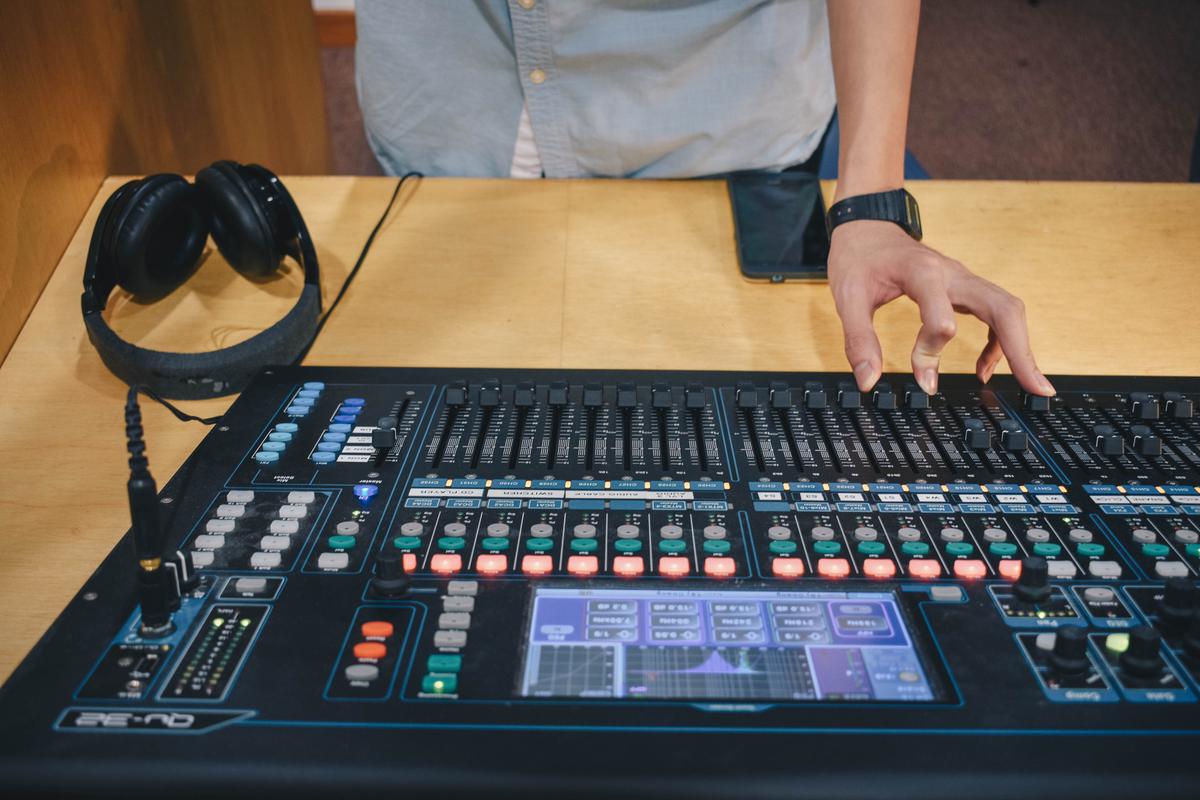
Photo by sayhitobel on Unsplash
The Art of Sequencing
Dude, it’s like capturing a mondo wave, sequence your tunes is all about riding that sound wave without wiping out.
Now, let’s break it down. Mastering or tuning has totally similar vibes with surfing. First, you need a good surfboard – in our case, let’s say that’s the dynamic range. Picture it as the board’s flexibility, the wider the dynamic range, the more knee-bending, hair-raising ride you can offer to the eardrums of listeners, you got me?
Time to paddle! Once you’ve got the hang of the dynamic range, steer towards balancing the tracks in the frequency and stereo field. It’s like picking the perfect wave, it needs to have the right speed, height, and power. To achieve this, bro, make sure your kicks and bass aren’t scuffling for room in the low frequencies. It’s all about sharing space, like dolphins in the ocean.
But hey, don’t space out! Keep it steady with volume fader and trim tool. They’re like the wax on your board, grip it right and you’ll have a smooth, leveled track that won’t sink beneath the waves of a red digital distortion sea.
And you know what’s gnarlier than riding a wave? Riding a series of waves! Automation is your best buddy for transitioning from track to track, keeping the listeners stoked without the awkward lulls. It’s like linking your rides from wave to wave, maintaining that wicked flow.
Then comes the biggest kahuna: testing. Just like scouting for swells, you need to kick out your tune on different sound systems. It ain’t no good if it only sounds tubular on your gear but a total wipeout on someone else’s. Playing the track on different devices will help identify any range issues, so that you can get it fixed before sharing your masterpiece.
So, next time you’re mastering, think like a surfer—Always looking forward, ready, and absolutely stoked for the ride! Because bro, even though we’re in completely indoors, all these sounds? They’re our ocean. And whether its resonating from the mountains or from the beats, it’s all about keeping the rhythm and riding the wave. Totally gnarly, right?

The mastering process, much like a well-executed surf ride, requires dedication, precision, and practice. Every element, every bounce of sound, every tiny detail matters and if you overlook one, your whole mix could falter. With an understanding of a suitable listening environment, the delicate balance of levels, strong equalizing techniques, continual monitoring, and the art of sequencing, you’ll be carving up your mixes like a seasoned surfer on the ocean waves. So, about that perfect sonic sunset? With these tools, you’re well on your way there.
Mastering the world of vocal recording can be an exhilarating journey, fraught with challenges as we tackle intricacies like sibilance and plosives. As hobbyists and aspiring professionals, refining our understanding of these elements is not merely an exploration, but a necessity. Issues of sibilance, the hissing ‘s’ in our recordings, or plosives, the undesirable ‘pops’ in our audio tracks, often prove to be a bane to vocal recording quality. Why do they occur, and more vitally, how do we manage them? Coupled closely with the art of microphone technique and positioning, these elements of sound may be tamed and modulated to perfection. It’s time to dive deep into understanding the origin, impact, and control of sibilance and plosives in our vocal recordings.
Understanding Sibilance and Plosives
Music – a mighty river that transcends time, evokes emotions, links cultures, and ignites souls. It’s an existence that is infinite, continuously transforming into divergent forms while maintaining its prime essence. To truly experience music, one must not just listen, but understand its different parts, sounds, and techniques.
Today, we dive deep into the heart of vocal recording to explore two pivotal elements that contribute significantly to quality music production: sibilance and plosives.
Sibilance is a unique linguistic phenomenon that reverberates in music creation and recording. When a vocalist sings or speaks, there are certain tongue and teeth engagements that result in what we call “hissing” sounds. These occur mostly with consonants such as “s” and “z.” This “hiss” can be pleasing on the ear when at the right level, adding an appealing smoothness to the vocal melody. However, when it’s too excessive, it can create a harsh or piercing sonic experience.
Controlling sibilance requires a level of finesse. The artist’s vocal technique plays a crucial part, as an adept vocalist can masterfully modulate these sounds, resulting in a perfect balance. On the technical side, sound engineers employ de-essers – an extraordinary piece of compression technology – that reduces or diminishes the sibilant “hiss” while keeping the integrity of the vocals.
On the other side of the spectrum, we have plosives – those percussive blasts that sometimes thump in your earpiece when someone says words with the letters “b,” “p,” and “t.” They are the explosive sounds resultant from the release of a blocked airstream in the vocal tract. In the language of music, plosives equate to mini sonic booms that can add potency to a song or become a vexation if unchecked.
To guard against the disturbances created by plosives, both vocalists and sound engineers possess an arsenal of techniques. For singers, it’s about mastering enunciation and controlling their delivery. For sound engineers, there are various pieces of equipment that can help. The Pop Filter, for example, when placed strategically in front of a microphone, can dramatically reduce the power of plosives.
Understanding the intricacies of sibilance and plosives is an odyssey into the world of music that reveals that sonic brilliance lies not just in melodies but in the minutiae. Whether it is the fleeting hiss in a jazz crooner’s serenade or the thump in a rapper’s fiery verse, appreciating these components enriches our music experience and deepens our affection for this extraordinary form of art. After all, when it comes to music, it’s all in the details. Each breath, each utterance, every tiny instance of sound is a note in the grand symphony of expression that we call music.
So next time you find yourself immersed in a harmonious symphony or an powerful rap verse, take a moment to listen – really listen – to those hisses and explosions briimming in the undercurrent. In those depths, you’ll discover yet another embellishment on the complex mural of music. How terrific it is that no two songs, or even two notes, are ever truly the same! Through this understanding, our journey into music’s soul becomes even more profound, surrendering unto its beat our unabating love and reverence.

Vocal Techniques to Manage Sibilance and Plosives
On the vast and mystifying canvas of music, the palette holds many spectacular shades that when combined, create a masterpiece of rhythm and sound. There is an incredible depth to the ocean of music, filled with fascinating elements waiting to be discovered, interpreted, and most importantly, expressed. Among these elements lay the often overlooked yet crucial details of sibilance and plosives, which can impact the beauty of the composition.
A major part of appreciating and understanding music comes from the deconstruction and scrutiny of its components. It’s acknowledging the power of the smallest details, where sibilance and plosives cradle and cool the flowing current of melody. The true palette of a maestro lies not just in the keys, chords, harmonies, or rhythms, but also in the intricate minuteness of syllables – the ‘s’ sounds and ‘p’ sounds that can shape and mould the rhythmic experience for the listeners.
Having sufficiently conversed about the meaning of sibilance and plosives, let’s stir the musical cauldron a little more and delve deeper into the arena of vocal techniques that can help manage these elements.
A popular and highly effective approach lies in vocal positioning. Sibilance can be controlled by slightly altering the position of the tongue and teeth, adjusting the way a vocalist forms ‘s’ or ‘sh’ sounds. Manipulating these subtle aspects can help reduce excessive hissing and give your vocals a smoother edge.
Similarly, plosives can be effectively managed by reducing airflow during pronunciation, consciously focusing on the way ‘p’ or ‘b’ sounds are articulated. Vocalists can also control plosives by using techniques like aspirated singing, where the consonants are pronounced with a significant release of air to prevent the characteristic popping sound.
It’s not merely vocal techniques that can help manage sibilance and plosives. Microphone technique is also paramount in producing a balanced and controlled vocal recording. Singers and sound engineers should consider microphone positioning, the type of microphone, and even the specific angle at which it is addressed to prevent the extremes of sibilance and plosives.
At times, physical tools like screens and shields are employed in the battle against plosives. These act to disperse the force of the vocal gusts, whereas high pass filtering can assist in reducing the impact of low-frequency plosives in the recording.
Despite the technicality sunk deep in these elements and techniques, it’s crucial to remember music’s inherent nature – it’s a form of expression that constantly evolves and changes. The endless swirl of sibilance and plosives, their application, and control is a dance that musicians learn and relearn as part of their career. Despite the changing trends and transformations in music, these fundamentals stay relevant and vital, amplifying the authenticity of the art form.
The grandeur of music relies deeply on these intricate and nuanced details. The management of sibilance and plosives is a testament to the same. Their control can enhance the beauty of the musical number, making it more pleasant, enjoyable and expressing the intended depth and emotion. Hence, the mastery of these vocal techniques can truly make one a connoisseur, mastering the art of perfectly balanced musical compositions.
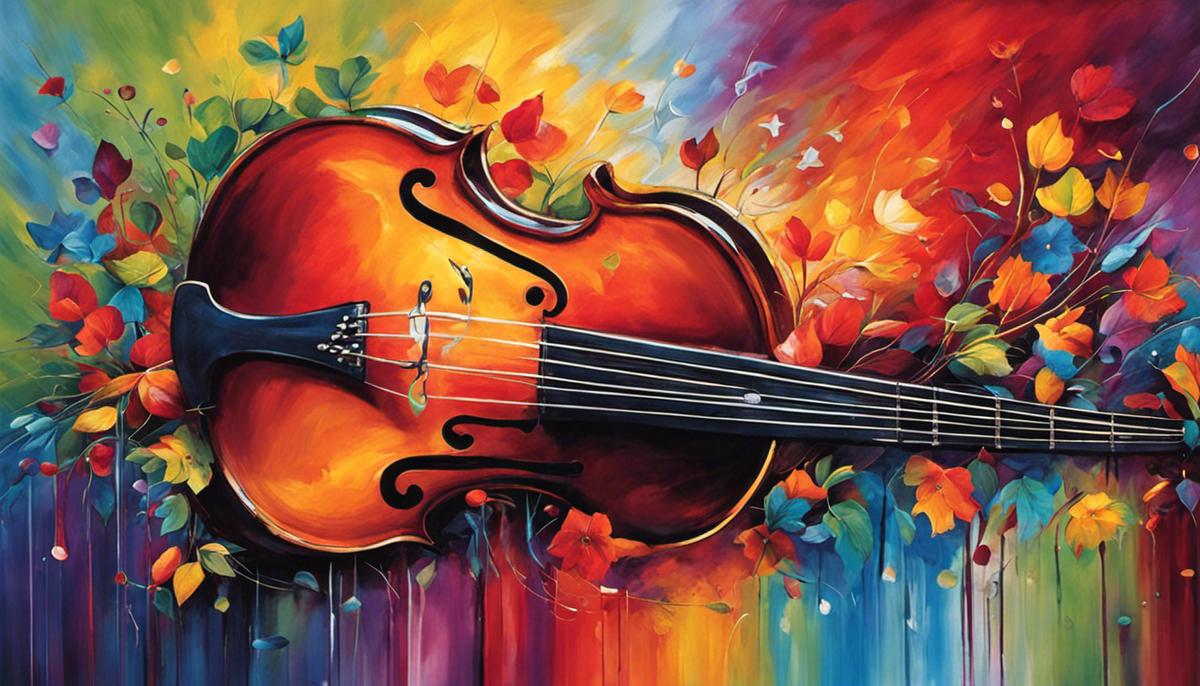
Post-Production Remedies for Sibilance and Plosives
Utilizing Post-Production Techniques to Soothe Sibilance and Pacify Plosives
Dancing in the realm of music production, the footfalls of sibilance and plosives are never too far away. These acoustic quirks lend character to compositions, yet unchecked, can swing towards discord rather than harmony. Kesha’s ‘Tik Tok’ wouldn’t be the same without its explosive opening ‘P’—but, conversely, unchecked sibilance might have left The Beatles’ ‘She Loves You’ sounding more like ‘She Lo-ves Yoouuu,’ to its detriment. To control these phantom performers, post-production techniques hold the key.
Proper Vocal Positioning: A Fastidious Tether to Sibilance
Vocals undoubtedly dictate the soul of a piece; in the same breath, they are the carriers of temperamental sibilance. A favoured post-production practice is to consciously usher the performer’s positioning relative to the microphone. Angling the microphone off-axis to the singer’s mouth can efficiently address sibilance, aligning the resonant chord of the voice with the microphone’s less sensitive axis. This empowers a nuanced capture of tonality while effectively reining in excessive sibilance.
Embracing Mic Techniques: Curbing the Plosive Culprit
Heavy-handed plosives, an unchecked force, can wreak creative havoc, leading to distorted low frequencies. Musicians, particularly singers, may grapple with the dominance of plosive sounds such as ‘b’, ‘p’ and ‘t’. Enter microphone techniques, the gentle dew that quells the rampant plosive flames. Artists may find it useful to subtly shift their direction when having to tackle plosives—moving slightly above or to the side of the microphone during these sounds. The result? A sound landscape where the vibrancy of music shines, out of the dark shadow of plosives.
Screening Shadows, Illuminating Sounds
Screens and shields play a crucial role – their placement between the mouth and microphone, an unassuming guardian in pacifying plosive interference. Screens scatter incoming energy, smoothing out those sharp plosive edges, while shields add an extra layer of protection to the microphone, further preserving the integrity of the sound. Don’t disregard these gatekeepers when wanting to embrace clarity in vocal recordings.
High-Pass Filtering: Compromising with Low-frequency Plosives
Leveraging the power of high-pass filtering in a post-production process is akin to holding an acoustic peace treaty with plosives. It’s possible to reduce the power of these low-frequency sounds, without robbing them of their inherent impact. High-pass filters allow higher frequencies to pass while effectively attenuating or minimizing lower frequencies – a moderating force for plosives, helping to strike a balance between impact and control.
A Winding Melodic Dance
Music flourishes in its evolution – a ceaseless danse macabre with flux as its eternal partner. Sibilance and plosives carry their roles in the choreography, influencing musical trends, styles and dealing with the demands of changing technology and listener tastes. There is joy in understanding dynamics, a real pleasure in tracing the undercurrents that inform rhythm and melody. Post-production techniques offer the means to master this dance across a wide spectrum of genres.
The Sounds of Expertise
Undulating under the euphony of great compositions is the mastery of techniques like controlling sibilance and plosive sounds. These, when left unchecked, can disrupt an otherwise enthralling experience. Artists who deploy the tools and techniques at their disposal demonstrate inspiring prowess and an understanding of the intricate puzzle that is music. So, the next time you’re lost within the kaleidoscopic whirl of a track, spare a thought for the subtlety of sibilance control and the pacifying efforts towards plosives – the unsung heroes that truly make music an enchanting adventure.

Perfection in the realm of vocal recording is not an easy quest, yet it’s one that yields immense satisfaction and professional clarity in our work. A keen understanding of troubles like sibilance and plosives, and the ways to navigate them, drastically enhances the quality of our vocal recordings. By exploring profound vocal techniques, mindful articulation, and positioning, we already pave the way for significantly cleaner, professional-grade sound. Additionally, complementing these techniques with post-production remedies such as de-essing and high-pass filters rounds out our toolkit to handle sibilance and plosives effectively. Armed with these tools and knowledge, you have everything you need to conquer the world of vocal recording, one well-articulated syllable at a time.
In the realm of sound engineering, the term ‘muddy mix’ is likely to inspire a sense of dread or frustration. This phenomenon refers to a sound mix that lacks clarity and distinctness, typically occurring due to an overabundance of certain frequencies that ends up masking other critical elements of the sound. However, the solution isn’t as elusive as you might think, especially once you comprehend the audio frequency spectrum, the role of equalization techniques and the careful approach to compression in mixing. This essay dives deep into these critical components of audio production to offer practical advice on how to salvage and prevent a muddy mix, enabling enthusiasts and hobbyists to reach a greater sophistication in their craft.
Understanding Sound Frequency Spectrum
Alright dude, let’s talk some gnarly acoustics. You ever been just hangin’ five on a sick track only to realize it’s turned into a murky mess of sound? That’s not chill, bro. But don’t worry, ’cause we’re gonna talk about the audio frequency spectrum and how you can ride its wave to de-mud that grody mix.
The audio frequency spectrum, right? It’s like the rainbow of sounds. And just like a rainbow, each color—or in this case, each frequency—has its own vibe. If you want your sound not to be a bummer, those vibes have to jive together.
Everything kicks off with bass frequencies, those low, deep sounds that are kind of like the big kahunas of the surf—strong and steady. They’re going to be between 20 to 60 Hz. These dudes carry a lot of the power and warmth in your track, but if they crash against the other frequencies, they can create a lot of messy turbulence. Like, can’t-see-where-you’re-riding kind of stuff.
Moving up, we’ve got the low-mids from 60 to 250 Hz. This is where stuff like the lower range of vocals, bass guitars, and kick drums sit. These are like the perfect wave, man – fundamental to the sound, but can totally wreck your mix if they’re too overpowering.
Then come the mid-range frequencies, sitting chill between 250 Hz to 2 kHz. This range is the main wave that most instruments ride on. Important, bro, but you don’t want it too crowded, or you’re gonna wipe out.
And lastly, the highs, 2 kHz and up. High frequencies are like the sea foam on the crest of your wave, giving it that sparkle and definition. But, too much of it, and it’s like being smacked in the face by a salty wave, dude. Not cool.
So, how does this help with your muddy mix? Imagine each track is like a surfer, ok? Each surfer has their own territory on the wave. If everyone tries to ride the same area, there’s gonna be collisions, and everyone goes face-first into the sea foam. But if each surfer gets their own zone, everyone catches the wave smoothly.
This is what EQ is for – shaping each track’s frequency just right so that everybody’s having a groovy time without the clash. It helps to cut more than you boost, emphasizing the sweet spots while ducking out of the traffic.
Make sense, dudes? I hope so, ’cause there’s nothing more killer than a mix where everything has its own hangout spot on the frequency spectrum. It’s like every instrument is catching its own perfect wave. So, give it a shot, dudes, and clean up that muddy mix with a fab dose of frequency knowledge. Catch you on the flipside!
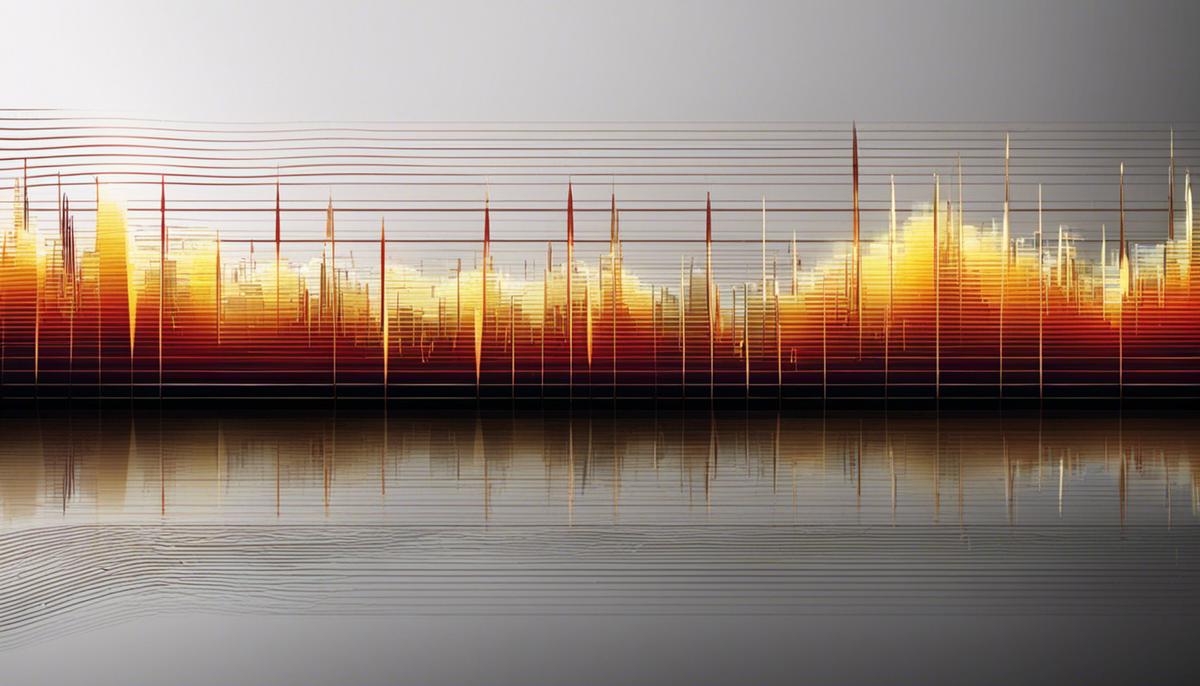
Practical Equalization Techniques
Stoke-Up Your Tracks: Clearing the Muddy Mix with EQ Techniques
Dudes and dudettes, ever hit that gnarly wave and get swallowed by the monster foam only to emerge, overjoyed by the chaotic beauty? Well, that’s exactly what it feels like when your mix swims in a sea of muddy audio waters. But fear no more, for these tight equalization (EQ) techniques are your surfboard to ride that crazy audio wave to clarity.
First off, you gotta understand, the sounds you capture in your studio are like surfers on the waves—each gotta have their own sweet ride. They need to carve out their own lane, making sure they’re not crashing into each other. This is where equalization comes into play. It’s like your own personal beach lifeguard, ensuring every sound has its own bandwidth to frolic in.
So, you’ve got yourself a mix that’s vibing more clam chowder than clear Pacific. Fret not! Throw on some polarized sunglasses, cause we’re about to shed light on some seriously practical EQ techniques.
Most peeps don’t realize the magic bullet of why their mixes are sounding like tumbleweeds in the sand—it’s those cluttery frequencies. Crank up those brassy instruments or those low-frequency vocals to unnaturally high points, and your mix is gonna drown faster than a surfer without a board. One gnarly method to pull you out of the sand is to geek out with a frequency analyzer. This baby can help scrutinize which tones are overwhelming your beach party.
Remember our surfer – wave analogy? Well, imagine this: each frequency is like a wave, and the surfer is your particular sound. When high frequency waves come charging, the synth surfers are going to carve up those waves. But, when the giant waves roll in—the low frequencies—it’s time for the big dudes, your bass and kick, to charge. The EQing skill is adjusting the amplitude (or volume) of these waves to make sure no surfer is overwhelmed, or wipeouts so to speak.
Righteous, so you’ve nailed that down, but your mix is still hitting way more boggy than bodacious. It’s time to let in some sunshine with EQ sweep and cuts. A sweep is when you crank up a narrow frequency band and move it around, kind of like using a metal detector on the beach, looking for that buried treasure. When the unwanted noise rockets up like a rogue wave, that’s your cue to cut that frequency down. This helps clear up your mix faster than a lifeguard clearing a shark warning.
And do not forget about those high-pass and low-pass filters, my friend. They’re like the surf leashes for your sounds, keeping the unwanted low and high frequencies in check, preventing them from washing away the sound of your mix.
Surf’s up, and it’s time to ride the wave of EQ greatness. Remember every instrument is a surfer and your mix is the ocean. You gotta maintain balance to truly ride the high vibes of a well-crafted mix. Keep each sound in its own frequency lane and use your EQ tools to clear the way. Above all, just like catching waves, practice makes perfect. So grab your audio surfboard and hit those sound waves!
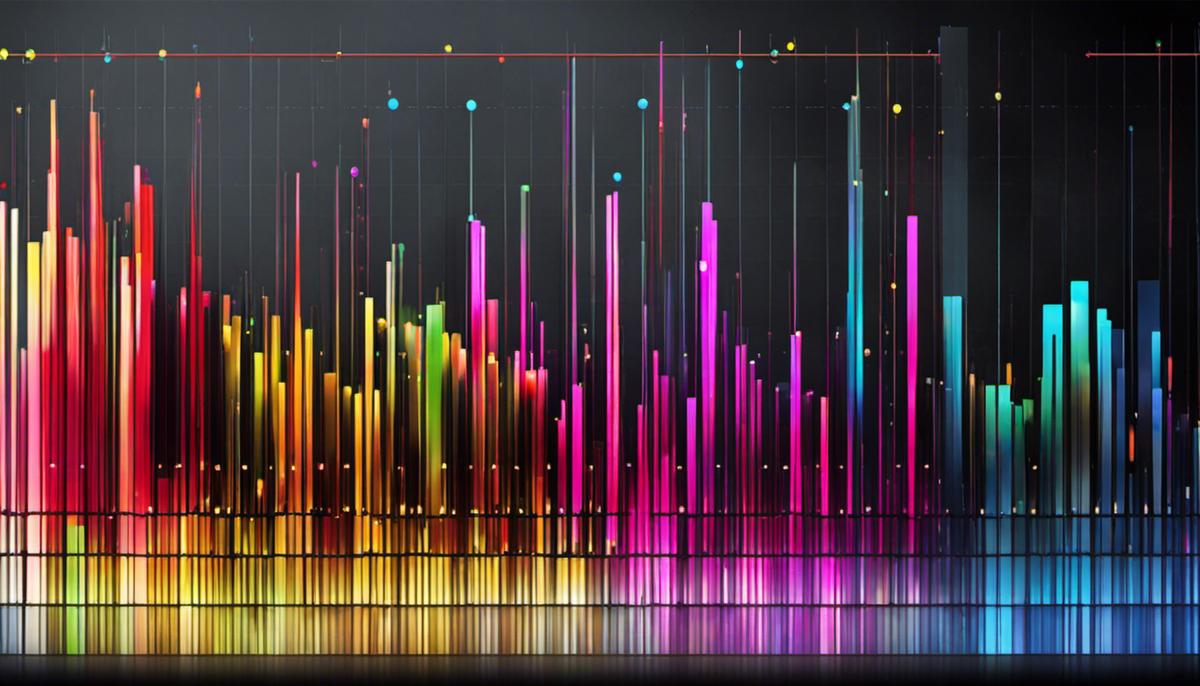
The Role of Compression in Mixing
Dude, straight talk, mixing jams in your wave cave is totally like riding the gnarliest wave, right? Like, it’s all about the flow and balance of different elements. So, let’s now wax our surfboards of wisdom and catch the next mondo wave of knowledge: compression in audio mixing.
Imagine the compression in audio land as the ultimate chillax wave tamer. Don’t get us wrong, wave crashers offer an adrenaline rush when surfing, but you don’t always need that in your mix space, dude. So, enters compression, the brah that mellows out the peaks and valleys of your audio waves, offering the smoothest ride ever!
Think of various sounds in your mix as surfers with their own unique wave styles. Some rip it hard, coming in hot and heavy, while others are laid back cruisers. Compression is like a rad surf coach, ensuring all surfers, regardless of their style, find the best part of the wave to ride, keeping them on a level playing field.
So let’s hula into clarity, my dudes. Ever wonder why some mixes sound clearer than the water in Maui on a sunny day? That’s compression at work, brah! It creates enough space for each of your instrument pals to hit the perfect wave, preventing any radical collisions that can muffle your sound totally killing the vibe.
Start by identifying the surfers (sounds) that tend to hog the wave more than others, those loud discordant sounds with long decays. Then, cinch up your board shorts and dive head-first into the turbulent ocean of compression settings. The threshold is your starting point, the point at which those wave hogging sounds will start being compressed. Attack settings determine the speed at which the compression dives into action, while the release controls how fast it releases its grip.
Once you get the hang of it, you’ll find that your mix sound has less sudden spikes and drops, and more of an even, consistent flow, letting your listener dudes effortlessly ride the rhythm and melody of your song without pesky sound dropouts or ear-blasting spikes.
It’s crucial to remember that nothing zonks the gnar of a mix like overdoing compression. Keep it mellow like a lazy right-hand point break. Over-compressing may squash the dynamic range, squeeze the life out of the mix and make your waves totally flat.
Stay stoked, brah! Let’s all remember that in the sonic surf, clarity is key. Using compression properly will keep your mix as smooth as a glassy barrel on a warm beach day. It’s game time! Get in that studio, crank the knobs, and make your surfer sounds sing like a sunset sesh with the crew. Jam that compression and mix your epic sound wave! Aloha and shred on, dudes!
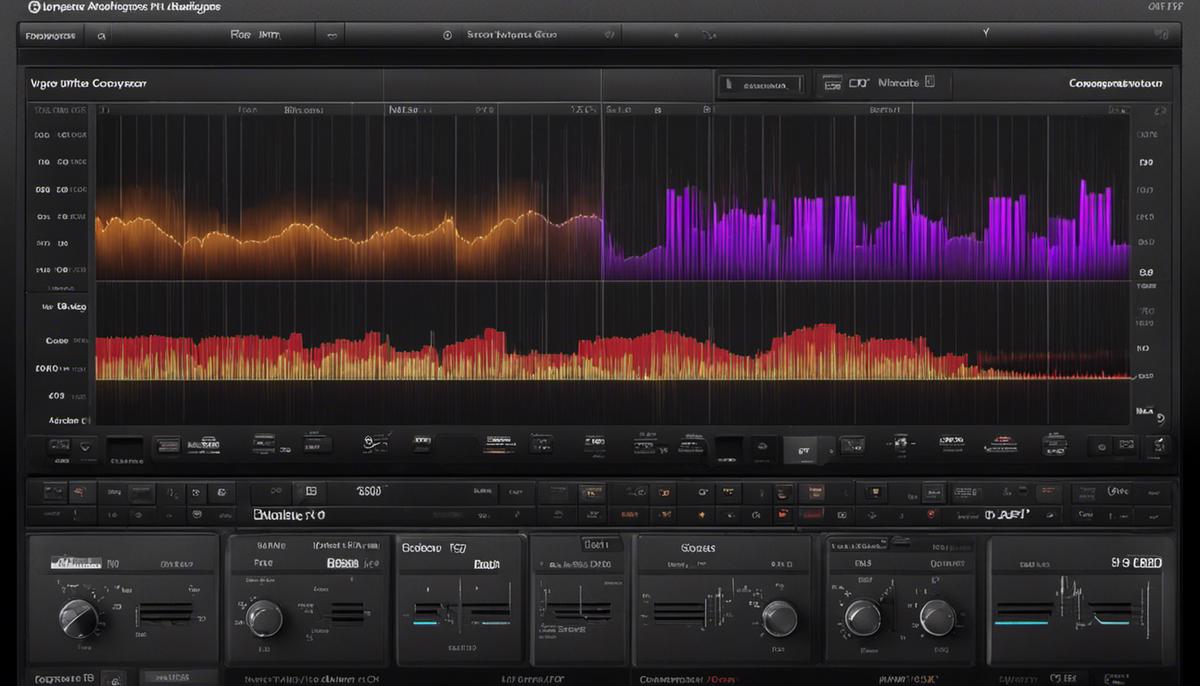
Audio mixing is part science, part art – the effectiveness hinges on a balance of technical understanding and intuitive decision making. Having a firm grasp on the audio frequency spectrum, EQ principles, and the role of compression is vital in creating beautiful, clear audio mixes. However, it all comes down to the fine-tuning of these elements according to the requirements of each track. This essay imparts a detailed understanding of these aspects, allowing you to wield them astutely to avoid the dreaded muddy mix. Remember that patience, practice, and a good ear are your best allies on this path towards mastery in audio mixing.
Page 5 of 12 « First ... « 3 4 5 6 7 » ... Last »

















